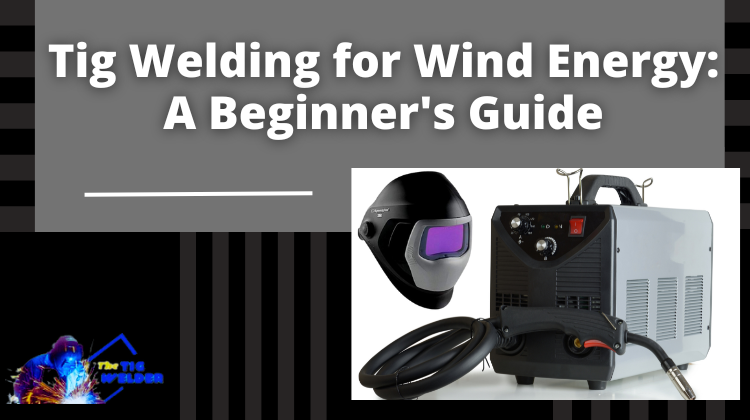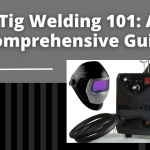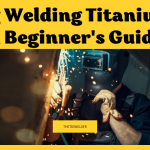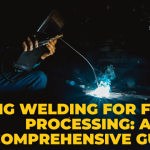Tig welding is a fusion welding, which means the weld is created by melting and fusing the base metals. It is often used on thin materials, producing a clean, precise weld with minimal distortion. The tungsten electrode creates an arc, which heats the base metals to their melting point. If necessary, the welder then adds a filler metal to create the desired weld shape and size.
One of the main benefits of tig welding is its ability to produce high-quality welds with minimal slag and spatter. This is especially important in the wind energy industry, where the welds must withstand extreme environmental conditions and high loads. Tig welding is also highly versatile, as it can be used on various materials, including aluminum, steel, and titanium.
However, tig welding does have some drawbacks to consider. It requires more skill and precision than other welding methods, as the welder must manually control the arc and filler metal. It is also generally slower than other welding methods, requiring multiple passes to build up the weld.
Common materials used in tig welding for wind energy include aluminum alloys, stainless steel, and high-strength low-alloy (HSLA) steels. These materials are chosen for their strength, corrosion resistance, and ability to withstand extreme temperatures and loads.

Tig Welding for Wind Energy
For those who are new to tig welding and are interested in learning more about how it can be used in the wind energy industry, this beginner’s guide is for you. We will cover the basics of tig welding and provide tips and techniques for getting started.
Setting up a Tig Welding Machine
Before you begin tig welding, it is important to properly set up your welding machine and gather all necessary equipment and supplies. This includes the tig welding machine, a tungsten electrode, filler metal, a welding torch, and appropriate personal protective equipment (PPE).
Safety is of the utmost importance when tig welding, as the process involves high levels of heat and electricity. Make sure to follow all safety precautions, including wearing protective gear such as a welding helmet, gloves, and fire-resistant clothing. It is also important to ensure that the welding area is well-ventilated to prevent the buildup of toxic fumes.
To set up the tig welding machine, you will need to select the appropriate parameters based on the materials and thicknesses you will be welding. This includes setting the amperage, which determines the intensity of the arc and selecting the appropriate filler metal type. Consult the manufacturer’s instructions or a welding expert to set the machine’s parameters.
Preparing the Workpiece
Proper preparation of the workpiece is essential for ensuring a successful tig weld. This includes cleaning the metal surfaces to remove any dirt, rust, or contaminants that could weaken the weld. You may need a grinder or sandpaper to remove any scale or burrs.
Next, you will need to select and attach the appropriate electrodes to your welding torch. Tungsten electrodes come in various types, each with specific characteristics and use. The most common types are pure tungsten, thoriated tungsten, and created tungsten. Consult a welding expert or the manufacturer’s instructions to determine the best electrode type for your specific welding needs.
It is also important to carefully consider the joint design and weld size when preparing the workpiece. The collaborative design determines the shape and orientation of the weld, and it can affect the strength and appearance of the finished weld. The weld size, or the amount of filler metal used, should be appropriate for the welded materials’ thickness and strength requirements.
Performing the Weld
Once you have prepared the workpiece and set up the welding machine, you are ready to start the welding process. The first step is to strike an arc, which is done by touching the tungsten electrode to the workpiece and adjusting the amperage until the arc is established. The welder moves the torch along the joint, adding filler metal as needed to create the desired weld shape and size.
Maintaining a stable weld pool is crucial for producing a high-quality weld. This involves controlling the torch angle and travel speed and adding filler metal at the right rate. Keeping the tungsten electrode clean is also important, as any contamination can weaken the weld.
To end the weld, the welder should gradually reduce the amperage and filler metal flow and separate the tungsten electrode from the workpiece. The weld should then be covered with slag, a protective layer that helps prevent contamination and cool the weld. Once the weld has cooled, the slag can be removed with a chipping hammer or wire brush.
Finishing and Quality Control
After the weld is complete, it is important to properly finish and inspect the weld for defects. This may include grinding and polishing the weld to remove any excess filler metal and achieve a smooth, even finish.
Inspecting the weld for defects is crucial for ensuring the weld’s strength and reliability. Common defects include porosity, cracks, incomplete fusion, and inadequate penetration. If any defects are found, they may need to be repaired with additional welding or grinding.
Can You Tig Weld In The Wind?
TIG welding (tungsten inert gas welding) requires an electric arc to create the weld, which the wind can disrupt. Wind can cause the gas shield around the weld to be blown away, exposing the weld to the atmosphere and potentially causing defects. In general, it is not recommended to TIG weld in windy conditions, as the wind can affect the quality of the weld.
What Is 309 Tig Rod Used For?
309 TIG rod (tungsten inert gas welding rod) is a filler material used in TIG welding. It is made of a stainless steel alloy and is used for welding or joining stainless steel to other types of metal. 309 TIG rod is known for its corrosion resistance and is often used in applications where the welded joint will be exposed to harsh environments.
What Metals Cannot Be Tig Welded?
TIG welding can weld various metals, including aluminum, brass, copper, mild steel, and stainless steel. However, TIG welding is unsuitable for certain welding materials, such as cast iron, high-carbon steel, and certain types of plastics. These materials are difficult to weld using the TIG process because they do not readily conduct electricity and do not form a stable arc.
Why Is Tig The Strongest Weld?
TIG welding is often considered the strongest weld because it allows for precise control of the welding process, resulting in high-quality welds with minimal distortion. The TIG process also allows for the use of filler material, which can help to improve the strength of the weld. Additionally, TIG welding can be used on many materials, including aluminum and stainless steel, known for their high strength and corrosion resistance.
Can You Weld Everything With A Tig Welder?
TIG welding can be used to weld a wide variety of metals, but it is only suitable for some materials. Some materials, such as cast iron and high-carbon steels, are difficult to weld using the TIG process because they need to conduct electricity readily and form a stable arc. Additionally, TIG welding is not suitable for certain welding types of plastics. However, TIG welding can weld many common metals, including aluminum, brass, copper, mild steel, and stainless steel.
Conclusion
To perform tig welding successfully, it is important to properly set up the welding machine and gather all necessary equipment and supplies. Preparing the workpiece and choosing the appropriate joint design and weld size is also crucial for ensuring a successful weld. Maintaining proper torch technique and controlling the arc and filler metal flow is key to producing a stable weld pool. Finally, properly finishing and inspecting the weld for defects is essential for ensuring the weld’s strength and reliability.
As you continue learning and practicing tig welding, seeking additional resources and guidance from welding experts is important. With the right knowledge and skills, you can become proficient in tig welding and contribute to the wind energy industry.

It’s been years since I got into welding as a side hustle. It’s been so long since Doing All kinds of welds for business and pleasure as this is my hobby. Being in this field I have learned from hands-on-experience also came to know what gears work and what doesn’t. The Tig Welder is my own platform where I use to share my experience.






Leave a Reply